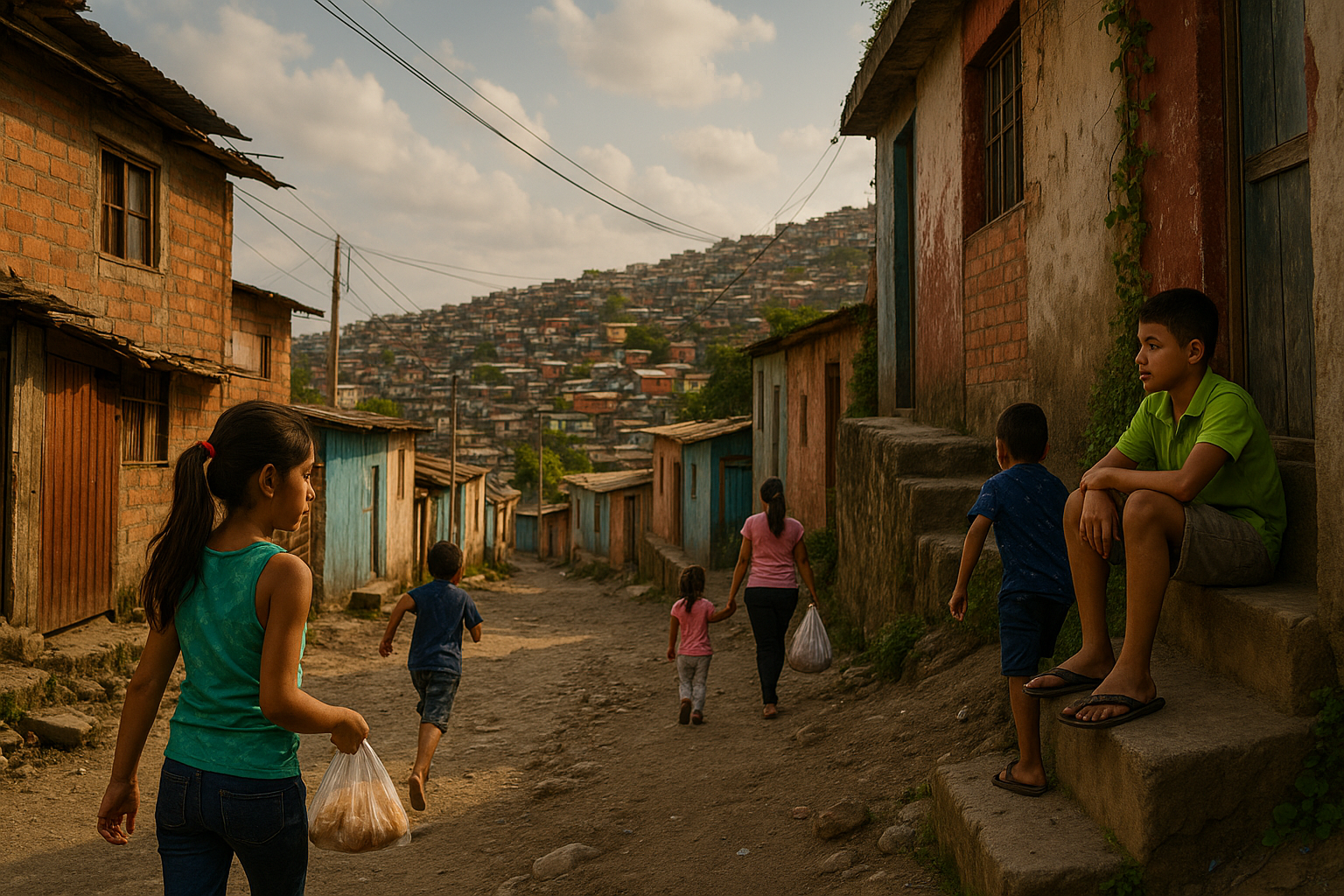Latin America’s Poverty Falls to Record Low, but Inequality Threatens the Gains
The World Bank’s 2025 update shows that poverty in Latin America and the Caribbean has dropped to a historic low of 25.2 percent, driven by strong labor markets and social transfers, while the middle class has expanded to 42.8 percent. Yet, persistent inequality, informality, and vulnerability threaten to slow progress unless structural reforms boost productivity, education, and job quality.

The World Bank's Poverty and Equity Global Practice, in partnership with CEDLAS and the Socio-Economic Database for Latin America and the Caribbean (SEDLAC), has released its Regional Poverty and Inequality Update for Latin America and the Caribbean (October 2025). The report portrays a region balancing recovery with vulnerability, one where poverty is projected to fall to 25.2 percent in 2025, while the middle class reaches a historic 42.8 percent of the population. Yet, beneath these achievements, 32 percent of Latin Americans remain vulnerable to falling back into poverty, with the Caribbean facing even higher risk at 36 percent.
Economic Gains amid Global Uncertainty
After years of turbulence, the region's economy is showing moderate but uneven growth. GDP expanded by 2.2 percent in 2024, maintaining the same pace as the previous year but trailing most global regions. Countries such as Mexico and the Dominican Republic experienced growth between 1.4 and 5 percent, while Argentina and Ecuador saw slight contraction. This economic rebound helped push poverty to its lowest level on record, 25.5 percent of the population living below $8.30 per day (PPP 2021). The improvement was fueled by job creation and targeted public transfers, especially in Brazil. However, the World Bank cautions that inflation, high debt burdens, and falling foreign investment may slow further progress. Between 2025 and 2027, poverty reduction is expected to stagnate at around 0.3 percentage points per year, underscoring the fragility of current gains.
The Expanding Middle Class, and Those Left Behind
The region's middle class has reached unprecedented levels, yet vulnerability remains stubbornly high. The vulnerable population, earning between $8.30 and $17 a day, has hovered near one-third of the total for a decade. Uruguay and Chile lead with low vulnerability rates (20–27%) and large middle classes exceeding 65%, while Peru and El Salvador lag behind with nearly 40% vulnerability. In the Caribbean, exposure to climate and natural disasters amplifies economic insecurity, with one in three residents at risk of slipping into poverty. The most significant middle-class expansion between 2022 and 2024 occurred in the Dominican Republic (+13.8 points) and Costa Rica (+8.9 points), followed by steady progress in Brazil and Mexico.
Inequality and Informality: Old Problems, New Dimensions
Latin America remains one of the world's most unequal regions. The top 20 percent of households capture 54 percent of income, while the poorest fifth receive just 4 percent. The regional Gini coefficient, 49.1 in 2024, still exceeds the World Bank's "high inequality" threshold, though it has improved by 2.3 points since 2016, largely due to advances in Brazil and Mexico. Income growth has been strongest for middle-income earners, averaging 4.7 percent annually, while the richest decile saw gains of just 2.5 percent. Still, deep structural flaws persist. The labor market remains dominated by informality, eight in ten poor workers lack pension coverage, and even among the middle class, one in three is informal. Education levels have improved, but returns to schooling have declined, meaning more education no longer guarantees higher income. The report warns that informality continues to trap millions in low-productivity, low-security jobs, curbing social mobility.
Jobs, Mobility, and the Path Ahead
Labor market recovery has been the linchpin of recent poverty reduction. Between 2016 and 2024, job and income growth accounted for 37 percent of poverty reduction, while public transfers contributed another quarter. Panel data from Argentina, Brazil, Peru, El Salvador, and the Dominican Republic show that poverty remains highly persistent, with 58–76 percent of poor households staying poor year after year. Households whose heads gained jobs were 13.8 percentage points more likely to escape poverty, while those that lost jobs were 14 points more likely to fall back. Occupational upgrading, moving into higher-skill roles, raised the likelihood of entering the middle class by 3 percentage points, whereas downgrading increased poverty risk.
Looking ahead, the World Bank urges governments to transition from short-term recovery to sustainable, inclusive growth. That means fostering job creation in agribusiness, tourism, and renewable energy, while investing in education, infrastructure, and capital markets. Strengthening institutions, modernizing tax systems, and aligning skills training with labor demand are essential to break the cycle of informality and low productivity. Without bold reforms, the report warns, the region's recovery may falter, its record-low poverty rates proving temporary in a landscape still shadowed by inequality, vulnerability, and fragile growth.
- FIRST PUBLISHED IN:
- Devdiscourse
ALSO READ
-
World Bank Backs Kerala's Health Revolution with $400M Boost
-
World Bank Boosts Kerala Health with $280M Loan
-
World Bank Approves $280M Program to Boost Kerala’s Health System and Elderly Care
-
World Bank Report Estimates $183M in Damages from Deadly Afghanistan Earthquake
-
World Bank Funds $280M Health Overhaul in Kerala









